In a Facebook post on Dec. 29, Animal Concerns Research and Education Society (Acres) questioned the effectiveness of myna-culling in the wake of new culling methods employed by the Agri-Food and Veterinary Authority (AVA) in Potong Pasir.
If you do not know what mynas are, here's an introductory video on the two species of mynas we commonly see.
What happened
According to Channel NewsAsia, a giant trap was set up by AVA on a sea apple tree near Block 147 Potong Pasir Avenue 1 on Dec. 27.
This was a new trial to control the 2,800 Javan Mynas (the black non-native ones) in the area.
This umbrella-looking canvas net is placed on the tree crown and wraps the entire tree, trapping mynas roosting in it.
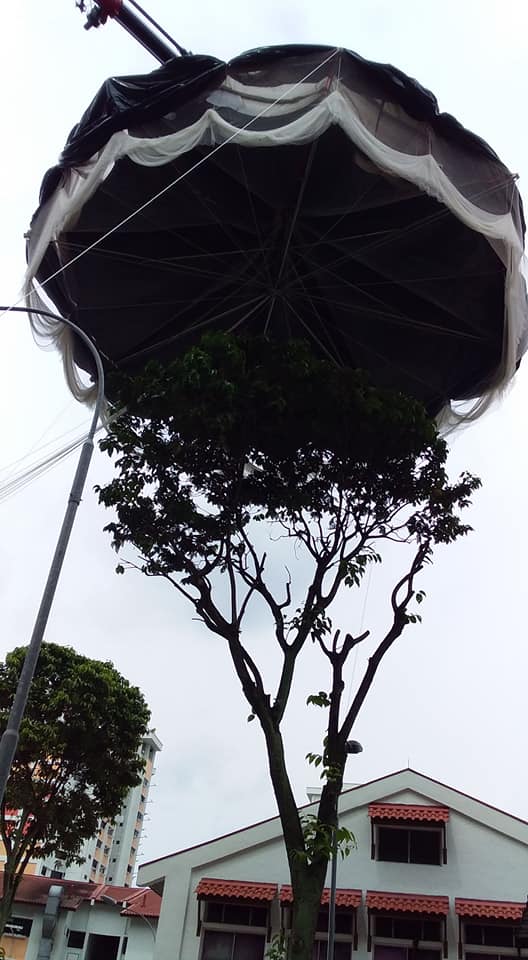 Photo by Pengkon Lau
Photo by Pengkon Lau
The air-tight net has carbon dioxide released into it, killing the mynas.
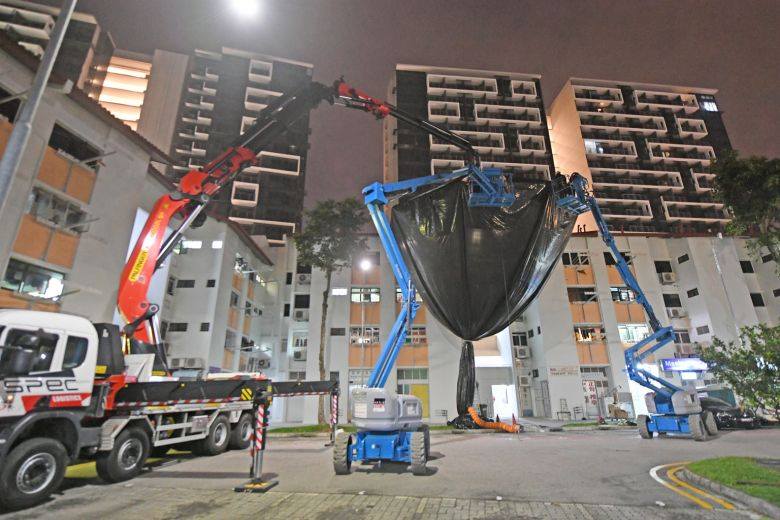 Photo by See Chee Tan
Photo by See Chee Tan
The net, along with the dead birds that were "humanely euthanised with carbon dioxide", were removed the same evening.
Besides this new method of culling, AVA also said the NParks was looking at replacing existing trees with ones that have less dense crowns, which are not as preferred by Javan mynahs.
Furthermore, AVA urged members of public not to feed the birds and clear the food scraps properly.
Recurring problem
Over the past two years, the Member of Parliament for Potong Pasir Sitoh Yih Pin received complaints from residents about the noise made by the mynas.
Since then, the town council worked with AVA to explore solutions to dispel the mynas -- including pruning trees and using lasers to deter mynas from roosting.
Both methods were ineffective.
AVA received over 20 complaints in 2018.
Of late, the noise got worse as more mynas began to roost in Potong Pasir after trees along Upper Serangoon Road were hard-pruned.
Some also suspected the development in Bidadari area contributed to the rise in mynas in Potong Pasir.
 Comments from CNA Facebook
Comments from CNA Facebook
Is culling effective in the long run?
In response to the latest tactic employed to get rid of the birds, Acres asked whether culling in any form is effective, and urged AVA to focus more on stopping public feeding of wild animals and better food waste management instead.
Acres observed that years of culling of crows have actually led to the increase in opportunistic species like mynas, rodents and pigeons, which bring about a different set of problems.
Acres added that culling at roosting sites might not be effective in population control as there are plenty of other feeding and roosting grounds for these highly adaptable mynas, such as trimmed grass patches and gaps in roofs of walkway shelters.
The mynas can move to other nesting sites but mynas will still return to cause a nuisance if people continue to feed them or not manage the food scraps well. More money will have to be spent to tackle the nuisance caused.
Here's the full post:
Netizens in support of Acres' view
Several netizens shared the same sentiments as Acres that culling is morally wrong and does not solve the root of the problem.
In particular, senior lecturer from National University of Singapore Department of Biological Sciences, Sivasothi N., found short-term methods like the giant trap "ignorant and disheartening".


 Comments from Acres Facebook
Comments from Acres Facebook
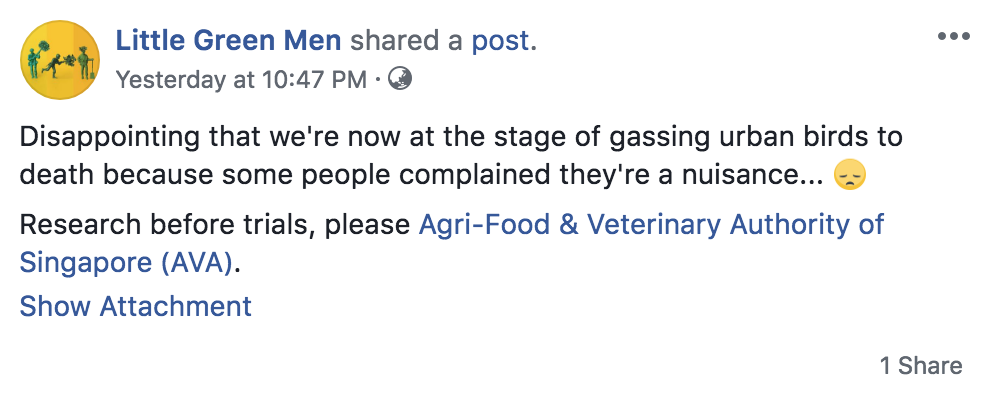 Comments from Acres Facebook
Comments from Acres Facebook
 Comments from Acres Facebook
Comments from Acres Facebook
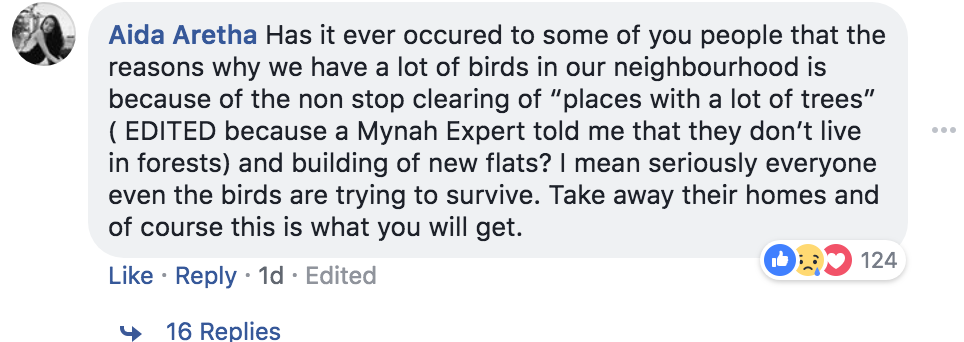 Comments from CNA Facebook
Comments from CNA Facebook
Including this resident who lives in the affected estate.
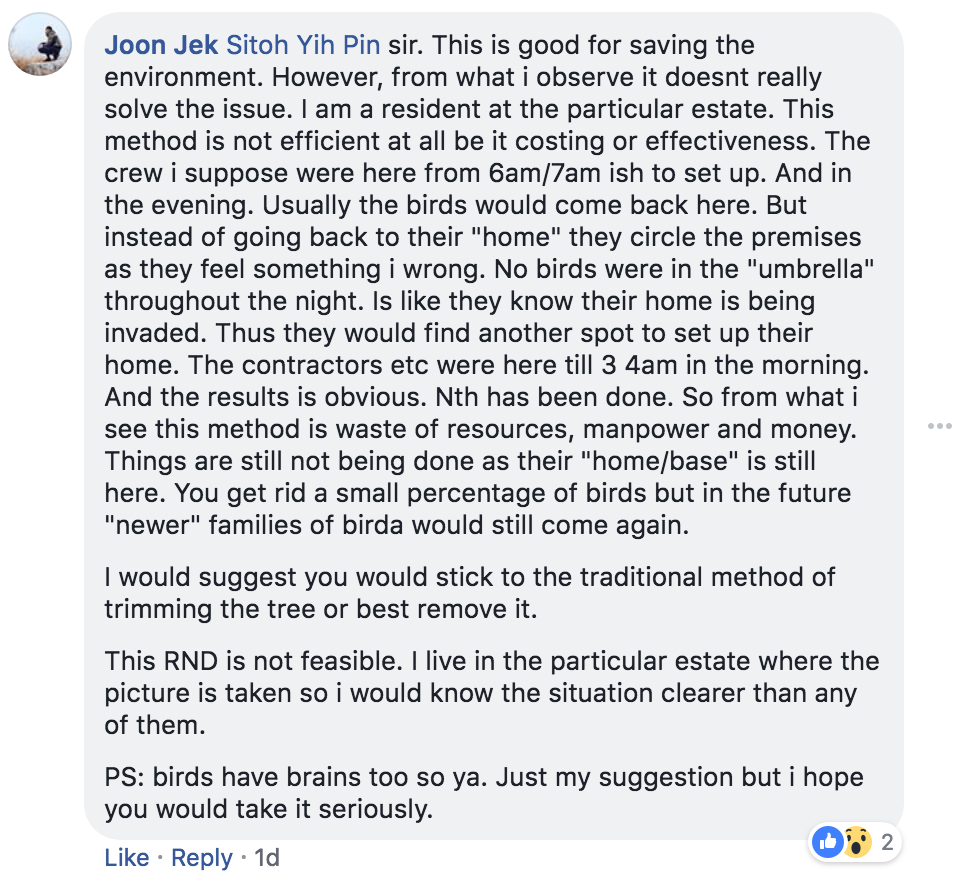 Comments from CNA Facebook
Comments from CNA Facebook
Here are other stories about culling in S'pore:
Top photo collage from photos by Pengkon Lau and See Chee Tan.
If you like what you read, follow us on Facebook, Instagram, Twitter and Telegram to get the latest updates.

